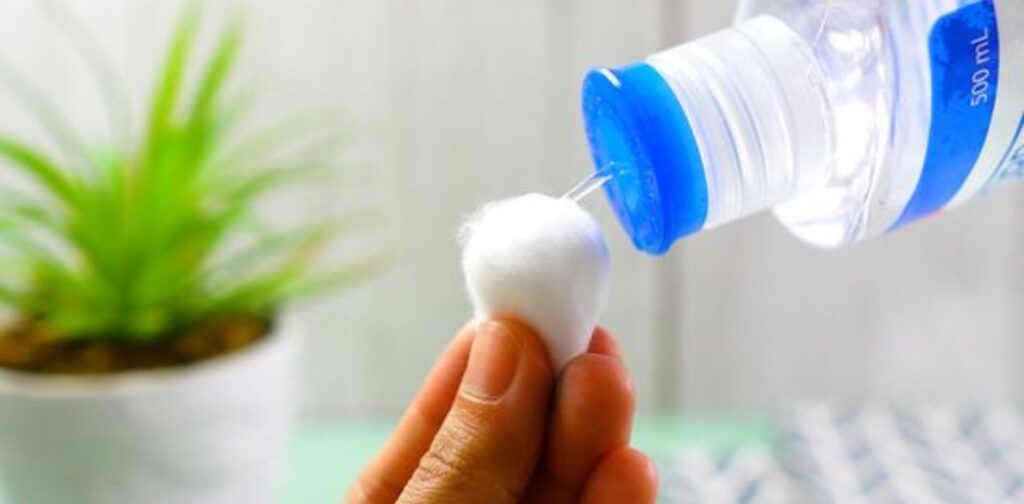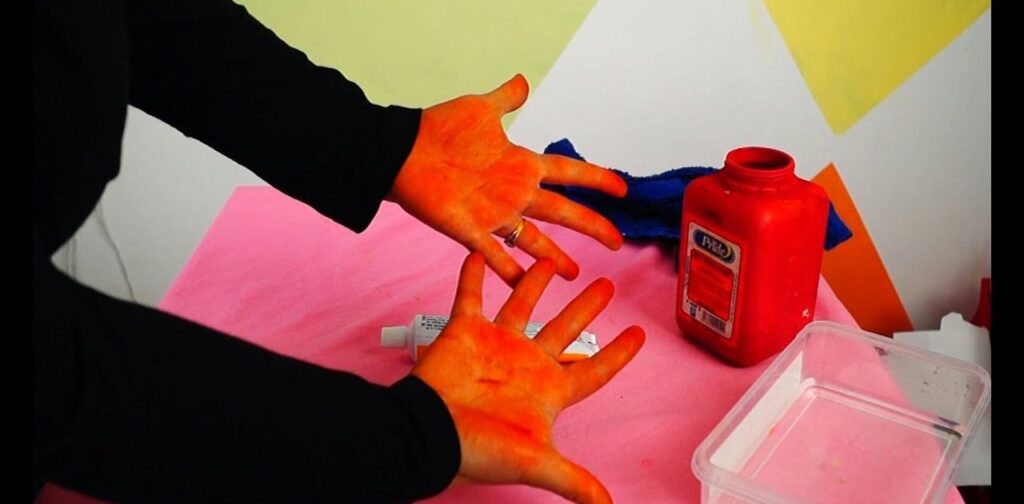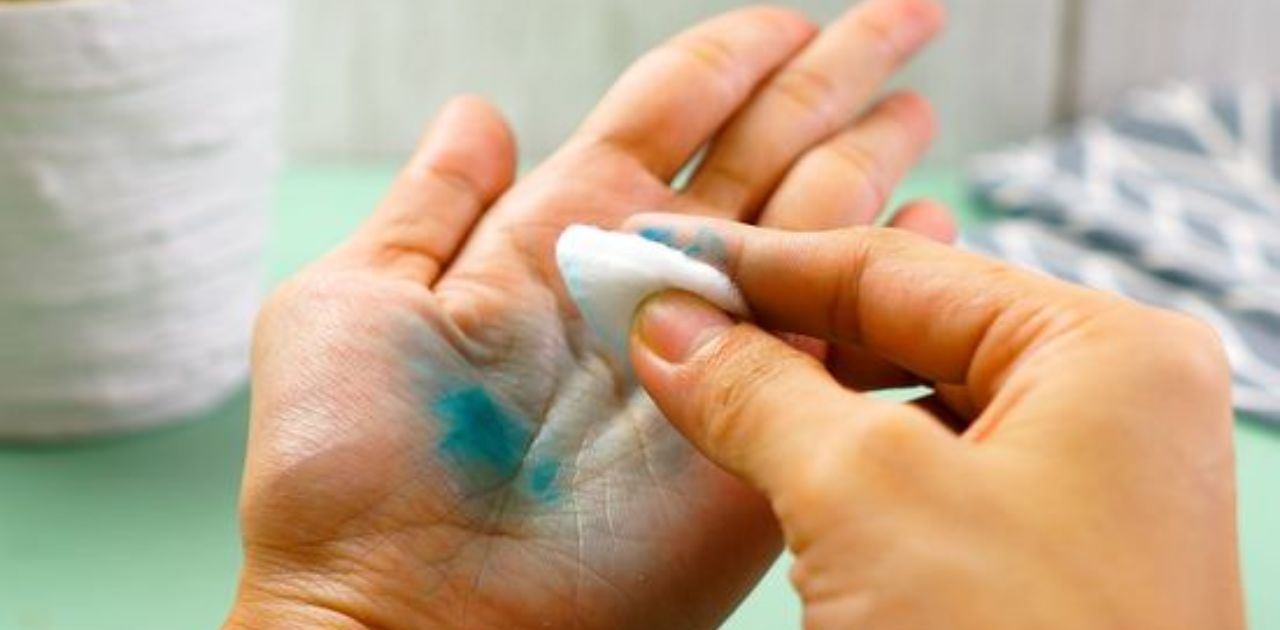Accidentally getting food coloring on your skin can happen during various culinary adventures or creative projects, leaving behind stubborn stains that seem challenging to remove. However, with the right techniques and ingredients, you can effectively eliminate these colorful marks.
Whether it’s from baking, crafting, or simply handling colorful foods, there are several methods you can try to get food coloring off your skin safely and efficiently. From basic soap and water to natural remedies like lemon juice and baking soda, this guide offers practical tips to help you restore your skin’s natural hue.
Natural Remedies for Removing Food Coloring Stains
Food coloring stains on the skin can be stubborn, but there are several natural remedies you can try to effectively remove them. From common household ingredients like vinegar and baking soda to hydrogen peroxide and toothpaste, these methods can help restore your skin’s natural color. However, it’s essential to take precautions and follow additional tips to ensure safe and efficient removal.
Utilize Vinegar and Baking Soda Mixture

Vinegar and baking soda are known for their cleaning properties and can be effective in removing food coloring stains from the skin. Here’s how to use them together:
- Create a Paste: Mix equal parts vinegar and baking soda to form a paste. The acidic nature of vinegar helps break down the food coloring, while baking soda acts as a gentle abrasive.
- Apply Gently: Using your fingers or a soft cloth, apply the paste to the stained area of the skin. Make sure to cover the entire stain with the paste.
- Massage and Rinse: Gently massage the paste into the skin in circular motions for a few minutes. Then, rinse the area with warm water.
- Repeat if Necessary: For stubborn stains, you may need to repeat the process multiple times until the food coloring is completely removed.
- Moisturize: After removing the stain, moisturize the skin to prevent dryness and irritation.
Apply Hydrogen Peroxide
Hydrogen peroxide is a mild antiseptic that can help break down food coloring stains on the skin. Here’s how to use it safely:
- Dilute the Peroxide: If using full-strength hydrogen peroxide, consider diluting it with water to reduce the risk of irritation, especially for sensitive skin.
- Soak a Cotton Ball: Pour a small amount of hydrogen peroxide onto a cotton ball or pad until it’s saturated but not dripping.
- Dab the Stained Area: Gently dab the stained area of the skin with the hydrogen peroxide-soaked cotton ball. Avoid rubbing too vigorously to prevent irritation.
- Let it Sit: Allow the hydrogen peroxide to sit on the stain for a few minutes to penetrate and break down the food coloring.
- Rinse Thoroughly: After the allotted time, rinse the area with lukewarm water to remove the hydrogen peroxide and loosened food coloring.
- Moisturize: Finish by applying a moisturizer to keep the skin hydrated and prevent dryness.
Use Toothpaste and Baking Soda
Toothpaste and baking soda are household staples known for their abrasive and cleansing properties. Here’s how to use them to remove food coloring stains from the skin:
- Mix Toothpaste and Baking Soda: Combine a small amount of toothpaste with an equal amount of baking soda to create a paste.
- Apply to Stained Area: Using your fingers or a soft cloth, gently apply the paste to the stained area of the skin. Ensure that the entire stain is covered with the paste.
- Massage in Circular Motions: Gently massage the paste into the skin using circular motions. The abrasive nature of the baking soda helps to lift the food coloring stains.
- Let it Sit: Allow the paste to sit on the skin for a few minutes to penetrate the stain.
- Rinse Thoroughly: After the allotted time, rinse the area with warm water to remove the paste and loosened food coloring.
- Moisturize: Finish by applying a moisturizer to soothe the skin and prevent dryness.
Precautions and Additional Tips

While natural remedies can be effective in removing food coloring stains from the skin, it’s essential to take precautions and follow additional tips to ensure safe and successful removal.
Test on a Small Area First
Before applying any natural remedy to a large area of the skin, it’s advisable to perform a patch test on a small, inconspicuous area. This helps to determine if you have any adverse reactions or allergies to the ingredients.
To perform a patch test:
- Choose a small area of skin, such as the inside of your wrist or forearm.
- Apply a small amount of the natural remedy to the test area.
- Wait for at least 24 hours and observe any signs of redness, irritation, or allergic reactions.
- If there are no adverse reactions, you can proceed to use the remedy on the stained area.
Moisturize After Removal
After removing food coloring stains from the skin, it’s essential to moisturize to prevent dryness and soothe the skin. Choose a gentle, hydrating moisturizer and apply it generously to the affected area.
Seek Medical Advice if Irritation Persists
If you experience persistent irritation, redness, or discomfort after attempting to remove food coloring stains from the skin, it’s crucial to seek medical advice. A dermatologist or healthcare professional can provide guidance and recommend appropriate treatments to alleviate symptoms and prevent further irritation.
Conclusion
In conclusion, natural remedies such as vinegar and baking soda, hydrogen peroxide, and toothpaste and baking soda can be effective in removing food coloring stains from the skin. However, it’s essential to take precautions, perform patch tests, and seek medical advice if necessary to ensure safe and successful removal. By following these tips and techniques, you can restore your skin’s natural color and maintain its health and appearance.
FAQ’s
Is it safe to use natural remedies to remove food coloring stains from the skin?
Yes, natural remedies like vinegar and baking soda, hydrogen peroxide, and toothpaste and baking soda are generally safe to use on the skin. However, it’s essential to perform a patch test first to check for any adverse reactions or allergies.
How long does it take for natural remedies to remove food coloring stains from the skin?
The time it takes to remove food coloring stains can vary depending on the severity of the stain and the method used. In general, it may take a few minutes to several applications over time for stubborn stains to be completely removed.
Can I use natural remedies on sensitive skin?
While natural remedies are generally gentle, individuals with sensitive skin should proceed with caution. It’s advisable to dilute ingredients like hydrogen peroxide and perform a patch test before applying them to larger areas of the skin.
What should I do if the stain persists after using natural remedies?
If the stain persists after using natural remedies, you may need to try a different method or seek medical advice. A dermatologist or healthcare professional can provide guidance and recommend appropriate treatments based on your skin type and the severity of the stain.
Are there any precautions I should take when using natural remedies?
Yes, it’s essential to take precautions when using natural remedies to remove food coloring stains from the skin. This includes performing a patch test, avoiding contact with eyes and mucous membranes, and moisturizing the skin after removal to prevent dryness.
Can I use natural remedies on children or infants?
It’s best to consult with a pediatrician or healthcare professional before using natural remedies on children or infants, especially if they have sensitive skin or underlying skin conditions.
Read Also: Texas Roadhouse Coupons [$5 off & $10 off Coupon Code]

